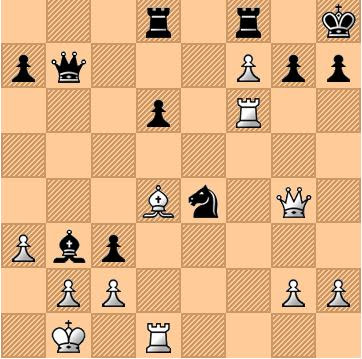$5 million match, 1992
1. e4, e5
2. Nf3, Nc6
3. Bb5, a6
4. Bxc6 ....
The moves so far comprise the Exchange Variation of Ruy Lopez.
4. .... dxc6
This move is almost always chosen at master level. Black has gained the bishop pair at the cost of a weakened pawn structure, due to his doubled pawns on c6 and c7. In the Exchange Variation, by exchanging the 'Spanish Bishop', White aims to reach an endgame in which he has the superior pawn structure, which may become an important factor. Thus Black is compelled to strive for an active position, generally avoiding piece exchanges.
5. 0-0, f6
6. d4, exd4
7. Nxd4, c5
8. Nb3, Qxd1
9. Rxd1, Bg4
10. f3, Be6
11. Nc3, Bd6
12. Be3, b6
13. a4, 0-0-0
14. a5, Kb7
15. e5, Be7
If 15....fxe5, then 16. axb6 cxb6, 17. Ne4 Be7, 18. Rxd8 Bxd8, 19. Nexc5 bxc5, 20. Nbxc5... and White gets more than enough compensation.
16. Rxd8, Bxd8
17. Ne4, Kc6
18. axb6, cxb6
19. Nbxc5, Bc8
If 19....bxc5, then 20. Rxa6+ Kd7, 21. Nxc5+!!...
20. Nxa6, fxe5
21. Nb4+, Resigns
If 21....Kb7, 22. Nd6+ Kc7, 23. Nf7!.
Black loses after 21....Kb5, 22. Nd6+ Kxb4, 23. Ra3!! Be7, 24. c3+ mate.
Black loses material after 21....Kd7, 22. Ra7+ Ke6, (if 22....Ke8, then 23. Nd6+) 23. Ng5+ followed by 24. Ra8 or 24. Nf7.
Black also gets nowhere after 21....Kc7, 22. Ra7+ Bb7, (if 22....Kb8, then 23. Nc6+ mate) 23. Rxb7+ Kxb7, 24. Nd6+ Kc7, 25. Nf7!.






















